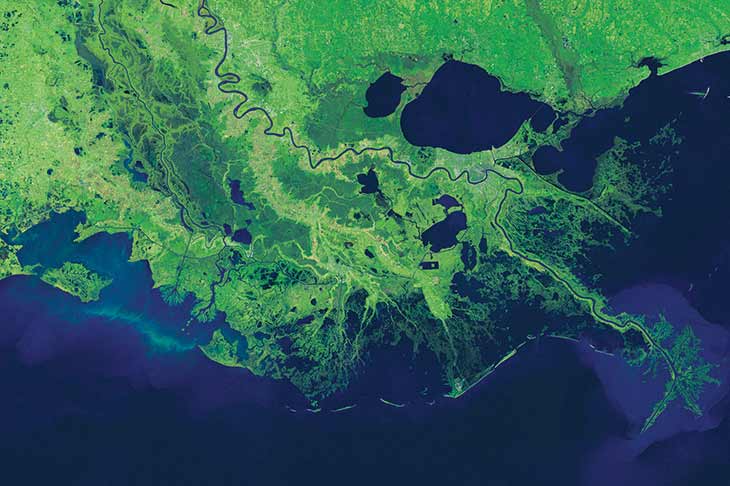Water, water, everywhere: Saving Louisiana's coast


A NASA Earth Observatory image from 2014 shows the Mississippi River wending toward the Louisiana coastline. (Image from earthobservatory.nasa.gov)
It was Day Nine after Hurricane Katrina struck in 2005 when Sarah Mack"s bosses at the Sewerage and Water Board of New Orleans called her back to work.
Mack had been working as an environmental scientist pre-Katrina. Her supervisors brought her back as emergency manager, she says, because she could communicate what is “a real and what is a perceived risk.”
Seeing the massive destruction from the storm opened Mack"s eyes. In a city defined by water, with a river winding through it and a lake to the north, pumping stations are important. Levees are essential. And drainage is a necessity.
But and this was the lightbulb moment “we could do whatever we want within our system but it isn"t going to do a lot of good unless we address the coastal land loss.”
That realization led Mack, who has a master"s degree (2004) and PhD (2009) in public health from Tulane University, to found her own company, Tierra Resources, in 2007. The company is now involved in several projects with Louisiana businesses such as Entergy and Conoco-Phillips to transact carbon credits in the wetlands.
The oil companies and power plants invest in wetland restoration to offset the carbon dioxide emissions or greenhouse gases that result from their operations.
Tierra Resources uses a relatively straightforward but data-heavy measurement of the photosynthesis process: The wetlands take the carbon dioxide out of the air. The carbon in the carbon dioxide gets incorporated into the plants and roots and soil. So, carbon dioxide, a major factor in warming up the atmosphere, is naturally stored as long as the wetland is in place.
“We are the ones that actually introduced wetlands to emission trading,” says Mack. “It took us five years but we developed the very first methodology to transact carbon credits in wetlands.”
This is an excerpt of an article that originally appeared in the September 2015 issue of Tulane magazine. To read the entire article, click here.
RELATED: Watch Vokes Geology Professor Torbjörn Törnqvist explain what the last ice age can tell us about the future of Earth, and how New Orleans fits into his research.
